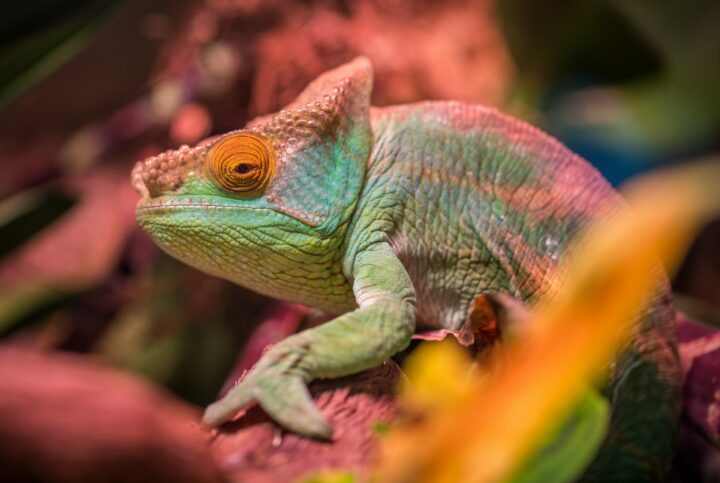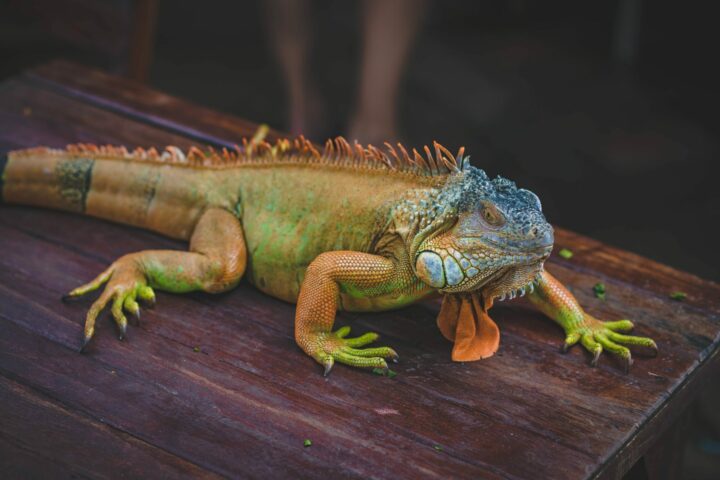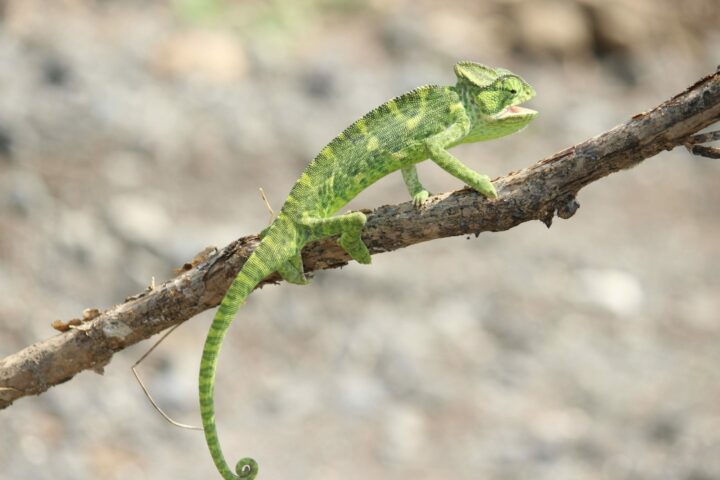Are you yearning to experience the wonders of reptile companionship without the demands of high-maintenance care? Look no further!
Our captivating guide will introduce you to a remarkable selection of low-maintenance pet lizards that bring both beauty and ease to your reptile-keeping journey.
Which low-maintenance lizard species make ideal reptile companions?
When considering low-maintenance lizard species as potential reptile companions, certain species stand out for their suitability. Leopard Geckos are a popular choice, known for their docile nature and relatively simple care requirements.
Bearded Dragons are another fantastic option, adored for their friendly demeanor and adaptability to various environments. If you’re seeking a smaller lizard, the Crested Gecko is a delightful choice, requiring minimal handling and thriving in a moderate temperature range.
These low-maintenance lizard species offer a harmonious balance of beauty and ease of care, making them ideal reptile companions for enthusiasts of all levels.
What are the key factors to consider when choosing a low-maintenance lizard?
Choosing a low-maintenance lizard involves considering several crucial factors to ensure a successful and enjoyable reptile ownership experience. First and foremost, it’s essential to assess the lizard’s size and its compatibility with your living space.
Temperament is another vital consideration, as some lizards are naturally more social and tolerant of handling than others. The lizard’s activity level and lifespan should also align with your expectations and commitment.
Furthermore, it’s important to consider any specific environmental needs, such as temperature and humidity requirements. By carefully evaluating these key factors, you can make an informed decision and select a low-maintenance lizard that fits your lifestyle and preferences.
How can you create a stress-free environment for your low-maintenance lizard?

Creating a stress-free environment is paramount for the well-being of your low-maintenance lizard. Start by providing an appropriately sized enclosure that allows for ample movement and includes essential features like hiding spots, climbing branches, and basking areas.
Maintain consistent temperature and humidity levels within their preferred range, as fluctuations can cause stress. Establish a regular feeding schedule and offer a varied diet that meets their nutritional needs.
It’s also crucial to minimize disturbances and handle your lizard gently and infrequently, respecting their natural instincts. By implementing these practices, you can create a serene and comfortable habitat that promotes the overall health and happiness of your low-maintenance lizard.
Is a low-maintenance lizard suitable for busy individuals or families?
Low-maintenance lizards can indeed be suitable companions for busy individuals or families. These reptiles are generally self-sufficient and require less attention compared to other pets, making them manageable for individuals with limited time.
They have lower feeding frequencies, don’t require daily walks, and can adapt to a predictable routine. However, it’s still important to provide a suitable environment and meet their basic needs, including temperature regulation, appropriate lighting, and a well-balanced diet.
While some lizards enjoy gentle handling and interaction, they generally do not require constant attention. With proper planning and consideration, low-maintenance lizards can fit seamlessly into the lives of busy individuals and families, offering the joys of reptile companionship without overwhelming demands.
What are the benefits of owning a low-maintenance pet lizard?
Owning a low-maintenance pet lizard brings forth a multitude of benefits that enrich both your life and your living space. These reptilian companions offer captivating beauty and unique features, becoming stunning focal points and conversation starters in your home.
They require less time and effort for care compared to other pets, making them ideal for those with busy lifestyles or limited availability. Low-maintenance lizards provide a sense of tranquility and calm with their mesmerizing behaviors and soothing presence.
Additionally, observing their natural instincts and unique characteristics can be educational and rewarding. With their minimal care requirements and enchanting qualities, low-maintenance pet lizards offer a delightful and low-stress pet ownership experience.
Can low-maintenance lizards thrive in small living spaces?
Low-maintenance lizards can thrive in small living spaces when their habitat is appropriately designed and their needs are met. While they may require less space compared to larger reptiles, it’s crucial to provide an enclosure that allows for adequate movement, temperature regulation, and environmental enrichment.
Vertical space can be utilized by incorporating climbing structures and branches. It’s important to maintain proper temperature and humidity levels within the enclosure, ensuring the lizard’s comfort and well-being. Despite limited space, low-maintenance lizards can still enjoy a fulfilling life when their habitat is thoughtfully designed to accommodate their needs.
What are the dietary needs of low-maintenance lizards?
Low-maintenance lizards have specific dietary needs that must be met to ensure their health and vitality. Most low-maintenance lizard species are insectivorous, meaning they primarily consume insects as their main source of nutrition.
Crickets, mealworms, and roaches are commonly offered as part of their diet. It’s crucial to provide a variety of appropriately sized live insects to meet their nutritional requirements. Some low-maintenance lizards, such as herbivorous species like the Green Iguana or the Uromastyx, require a diet rich in leafy greens, vegetables, and fruits.
It’s essential to research the specific dietary needs of your chosen lizard species and provide a well-balanced diet that replicates their natural nutritional requirements. Additionally, calcium and vitamin supplements may be necessary to ensure proper bone health and overall well-being.
How often should low-maintenance lizards be fed?

When it comes to feeding low-maintenance lizards, establishing a regular feeding schedule is crucial. The frequency of feeding depends on the age and species of the lizard.
Generally, adult lizards are fed every two to three days, while juveniles may require daily feedings. It’s important to provide an appropriate portion of food that can be consumed within 10 to 15 minutes.
Monitoring your lizard’s body condition and adjusting the feeding schedule accordingly is essential to prevent under or overfeeding. Remember, a well-balanced diet is key to maintaining their health and ensuring they receive the necessary nutrients for their well-being.
Do low-maintenance lizards require specialized lighting or heating?
Proper lighting and heating are essential for the well-being of low-maintenance lizards. Most reptiles require access to specific wavelengths of light, such as ultraviolet (UV) light, to meet their physiological needs.
UVB light aids in the synthesis of vitamin D, which is essential for calcium absorption and overall health. Additionally, providing a temperature gradient within their enclosure is vital.
This allows lizards to regulate their body temperature by moving between warm and cooler areas. Heat sources like ceramic heat emitters or heat mats can be used to create these temperature gradients. By providing appropriate lighting and heating, you ensure that your low-maintenance lizard thrives and maintains optimal health.
What type of habitat setup is best for low-maintenance lizards?
Creating a suitable habitat setup is crucial for the well-being of low-maintenance lizards. Start by selecting an enclosure of adequate size that allows for natural behaviors and movement. Furnish the habitat with appropriate substrates, such as reptile carpet or natural substrates, ensuring they are safe and easy to clean.
Provide a variety of environmental enrichments, including hiding spots, branches, and rocks, to allow for exploration and stimulation. Temperature and humidity levels should match the lizard’s specific requirements, which can be achieved using thermostats and hygrometers.
Furthermore, maintaining a clean habitat by regularly removing waste and sanitizing the enclosure helps prevent health issues. By creating an optimal habitat setup, you provide a comfortable and stimulating environment for your low-maintenance lizard.
How can you ensure the health and longevity of your low-maintenance lizard?
Ensuring the health and longevity of your low-maintenance lizard requires proactive care and attention to their specific needs. Regular veterinary check-ups are crucial to monitor their overall health and address any potential issues.
Maintaining optimal habitat conditions, including temperature, humidity, and lighting, is essential. Providing a well-balanced and species-appropriate diet, as well as access to clean water, promotes their nutritional well-being. Regularly cleaning the enclosure and providing environmental enrichment helps prevent stress and the development of harmful bacteria.
Additionally, monitoring their behavior, appetite, and body condition allows for early detection of any potential health concerns. By adopting a holistic approach to their care, you can ensure a healthy and fulfilling life for your low-maintenance lizard companion.
Are there any common misconceptions about low-maintenance lizards?
There are a few common misconceptions surrounding low-maintenance lizards that are important to address. Firstly, low maintenance doesn’t mean no maintenance.
While these lizards require less care compared to other pets, they still have specific needs that must be met. Another misconception is that low-maintenance lizards are solitary creatures that don’t require interaction.
While they may not seek out constant attention, many lizards can be socialized and enjoy gentle handling and interaction with their owners. It’s also important to understand that each species has its unique care requirements, and assumptions should not be generalized.
Can low-maintenance lizards be handled and interacted with?

Yes, low-maintenance lizards can be handled and interacted with to varying degrees. However, it’s essential to consider each lizard’s individual temperament and natural behavior.
Some species are more tolerant of handling and enjoy interaction, while others prefer minimal disturbance. Before attempting to handle your low-maintenance lizard, it’s crucial to research their specific needs and handling guidelines.
This includes understanding proper handling techniques, ensuring clean hands, and providing a calm and safe environment. By respecting their boundaries and handling them gently and infrequently, you can develop a bond of trust and enjoy limited but meaningful interactions with your low-maintenance lizard.
Are low-maintenance lizards suitable for beginner reptile enthusiasts?
Low-maintenance lizards can be a great choice for beginner reptile enthusiasts due to their relatively simple care requirements. Their adaptability, tolerance for handling, and overall hardiness make them more forgiving for those new to reptile ownership.
Additionally, their smaller size and manageable feeding schedules make them easier to accommodate in a home environment.
However, it’s important for beginners to thoroughly research the specific needs of the chosen lizard species, including habitat setup, temperature requirements, and dietary preferences. By being well-prepared and committed to providing proper care, beginner reptile enthusiasts can have a rewarding and successful experience with low-maintenance lizards.
Where can you find reputable sources to acquire low-maintenance lizards?
| Lizard Species | Temperament | Habitat Requirements |
|---|---|---|
| Leopard Gecko | Docile and friendly | 20-gallon tank, dry substrate, hiding spots, temperature gradient |
| Bearded Dragon | Friendly and sociable | 40-gallon tank, UVB lighting, basking area, temperature gradient, vegetables and insects diet |
| Crested Gecko | Gentle and low-maintenance | 20-gallon tank, vertical space for climbing, moderate temperature range, fruit-based diet |
| Blue-Tongued Skink | Curious and calm | 40-gallon tank, temperature gradient, hiding spots, omnivorous diet (insects and vegetables) |
| Anole | Energetic and adaptable | 10-gallon tank, temperature gradient, UVB lighting, insects diet |
When searching for reputable sources to acquire low-maintenance lizards, it’s important to prioritize ethical and responsible practices. Reptile specialty stores and reputable breeders are often the best options, as they ensure the health and proper care of their lizards.
These sources can provide valuable guidance and support, especially for beginners. Local reptile expos and reptile rescue organizations can also be excellent places to find healthy low-maintenance lizards in need of a new home.
It’s crucial to avoid purchasing from illegal or unlicensed dealers, as this supports the unethical wildlife trade. By choosing reputable sources, you contribute to the well-being of low-maintenance lizards and support responsible reptile ownership.
Last words
In conclusion, low-maintenance lizards offer a fascinating and relatively easy-to-care-for reptile companion option for enthusiasts of all levels. By selecting the right lizard species and considering key factors such as habitat setup, feeding schedules, lighting, and heating requirements, you can create a stress-free environment that promotes their health and longevity.
Low-maintenance lizards can thrive in small living spaces, making them suitable for busy individuals or families seeking a pet that requires less time and attention. Owning a low-maintenance lizard brings numerous benefits, including their captivating beauty, educational value, and the sense of tranquility they provide.




